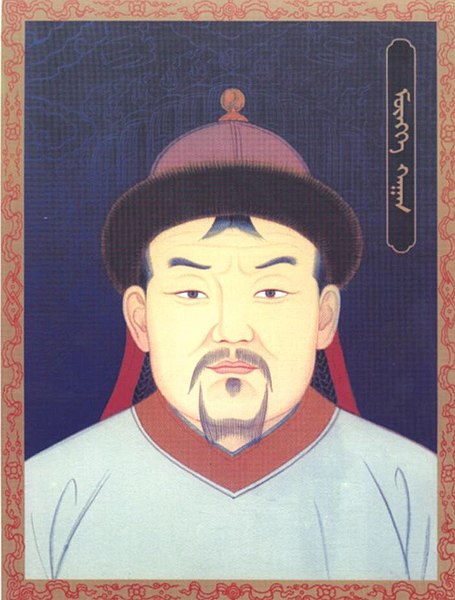The Resurgence of the Gospel, Part Three: The Challenge of the Muslim Curtain
Anyone familiar with the New Testament letter of I Peter is familiar with Pontus and Bithynia and Cappadocia. Those three northern provinces along with Galatia and Asia are mentioned in I Peter 1:1. All the aforementioned alternate routes east were well-known in New Testament and early Christian times and were well attested to by personal memoir and travel journals of those who traveled by those routes. Even though one could not get past Antioch into upper western Asia, Antioch itself was not cut off from Damascus when Damascus was under Moslem control. There was considerable interchange between Antioch and Damascus at the time of Moslem supremacy in the 7th and 8th centuries. In fact, the man considered to be the equal to St. Augustine of Hippo in Christian influence, was born into a wealthy Arab-Christian family of Damascus. His father was treasurer in the court of the Moslem caliph. He succeeded to that position himself until ad 725 when he resigned and entered the monastery at Mar Saba near Bethlehem. At the age of 51,while still at Mar Saba, his brilliance as a Christian spokesman began to shine. Today he is known as John of Damascus and numbered among the saints. As Augustine is famous for his Confessions and The City of God, John of Damascus is known as the author of The Fount of Knowledge and of the hymn/anthem, The Day of Resurrection. His influence pierced the Arab Curtain and had effect upon the Orthodox Church in Constantinople and later yet upon Thomas Aquinas when he wrote his Summa Theologica four centuries later.
Another within Arab Moslem rule within the shadow of the Minaret was Patriarch Timothy I (ad 779- 823) of the Nestorian Church. He is famous for his Apology of the Christian Faith consisting of a series of discussions held with the Moslem Caliph al-Mahdi on the Christian faith and its belief in the Trinitarian nature of God. By the end of his life in 823 he left behind many homilies, and an interpretation of the theology of Gregory Nazienzen (Chabet, Litterature, p.108-9). It was under his oversight that Christians of the Nestorian Church extended their presence across central and east Asia. The decline of the Church of the East (Nestorian) across central and east Asia in the twelfth and thirteen centuries was to a great extent due to the gradual decline of the whole Arab Moslem caliphate which began when the Caliph al-Mu’tasim (833-42) made the decision to take on a bodyguard of Turkish slaves for the first time in Abbasid history and which proved to be disastrous for Arabia, Persian, Egypt, North Syria, Afghanistan, and the Indian Punjab. Only Spain and the Shi’ite Idrisids and Aghlabids of North Africa were spared. The Hamadanids (ad 929-1003) swung to the Turkic Moslem Fatimids side (969-1171) soon after the Fatimids took established their caliphate in Egypt.

Möngke, sometimes spelled Mangu, was the fourth Great Khan of the Mongol Empire.
Image: Wikimedia Commons
The Nestorian Christians suffered greatly amidst all these upheavals and the resultant confusion told upon the administration of the Christian community until the arrival of the Mongols in certain areas. The hordes of Genghiz Khan in the early thirteenth century left the cities of Bukhara, Samarkand, Balkh and Herat, all Christian centers across central Asia greatly depopulated and practically in ashes. Between ad 1251 and 1260, Mangu the Great made the decision to incorporate China into his extensive empire and, thereby, incorporated the whole of Asia from the Pacific to the Russian steppes east of the Ural Mountains.
This was critical for the Asian Christian mission both positively and negatively. His brother, Kublai Khan (1260-94) went east and gained power over China. His other brother Hulagu started the Il-Khanate of Persia thereby over-throwing the Arab Abbasid Caliphate and devastated the city of Baghdad. Hulagu was ruthless in the destruction of Baghdad. The Nestorian Christians took refuge by hiding in their house-churches. As calm returned to the ruined city, Christians were granted full freedom by Hulagu. Yet all-in-all this was a calm before a storm because of the lamentable state of the church organization and of successive Il-khans of Persia who wavered toward Islam. Persecutions erupted, off and on, toward the Christians, until the 16th century. In the 14th century, Between 1380 and the advent of 1500, a Moslem Berlas Turk, by the name of Timur Lane (Tamerlane) usurped the throne of the Mongol ruler, Chagaty Khan at Samarkand and began a frightful reign of ruthless ferocity across Mesopotamia and India and Asia Minor. Both Christians and Moslems equally feared the likes who left mountains of skulls in Persia, Mesopotamia, India, and central Asia.
Category: Church History, Winter 2019


